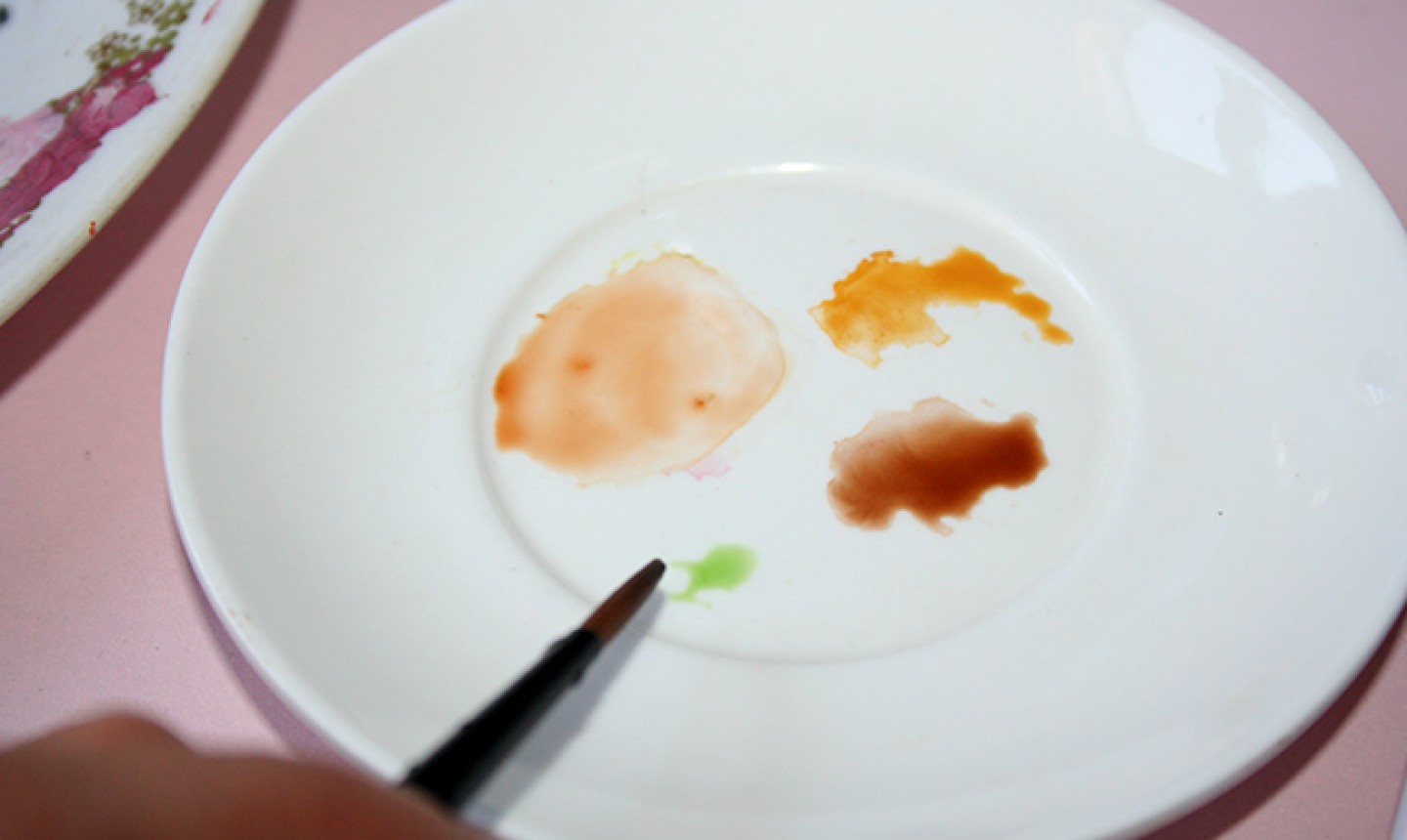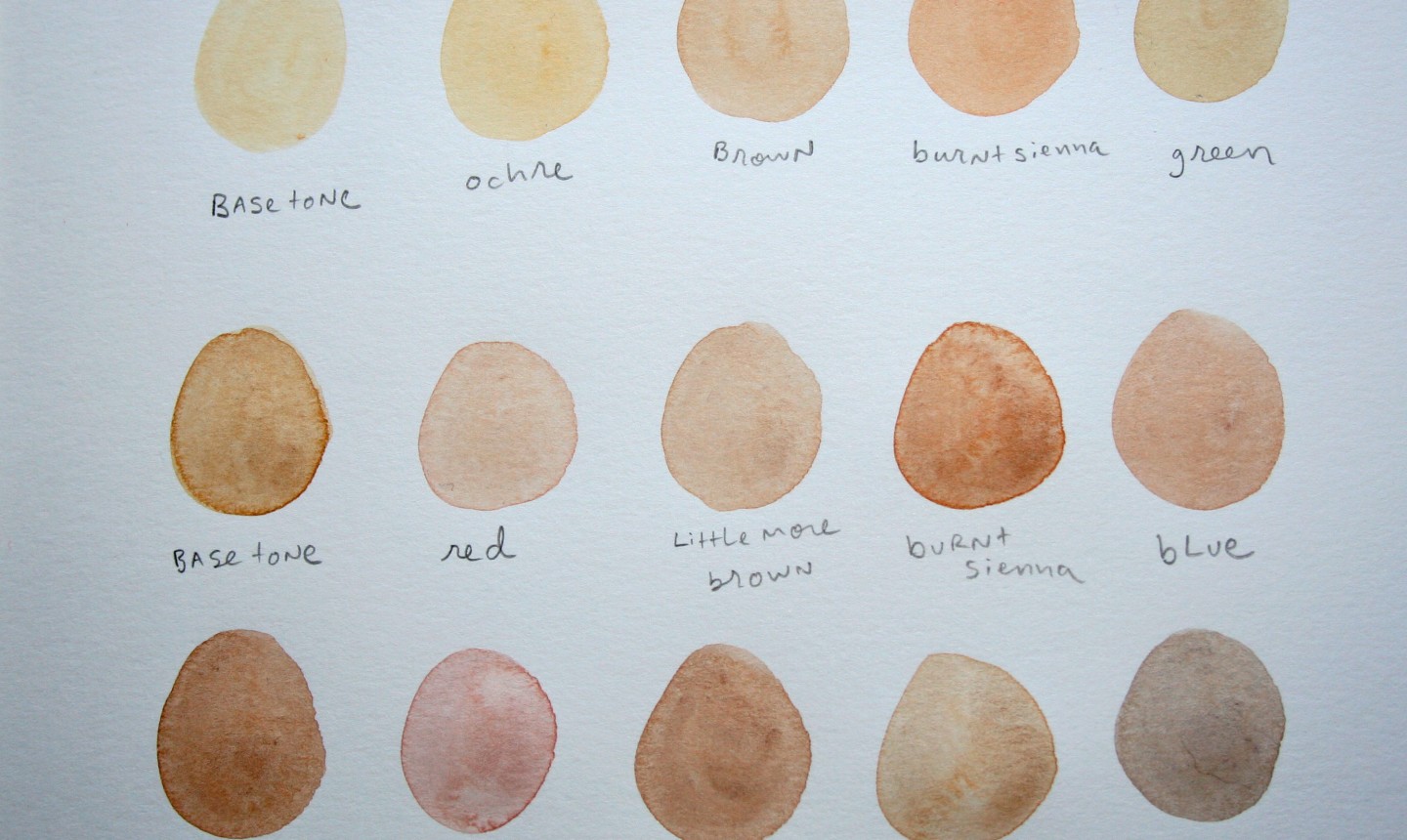How To Mix Skin Color In Watercolor
How to Paint Accurate Skin Tones in Watercolor
Whether yous're a new watercolorist or have been practicing for years, painting authentic skin tones in watercolor can be intimidating. Attaining lifelike and dimensional tones can be tricky — at that place's a little more than to it than just using colors straight from the tube.
Information technology's not complicated to mix realistic skin tones in watercolor.
Past using the simple method in this tutorial, you'll acquire how to mix watercolor skin tones starting with different ratios of primary colors. Information technology may take some mixing and experimentation to find the tones you're looking for, but this technique requires minimal materials and is accessible for artists at every level. With a lilliputian exercise, you'll soon be a pro!
What skin colour are you trying to paint?
Earlier you showtime mixing, first consider the pare tone you're trying to paint. If you take a reference image or are painting from life, really take a shut await at your subject.
While it'due south be easy to determine if a skin tone is dark, medium or lite, you lot'll as well desire to wait for subtleties in the undertone color of the skin. For example, when y'all really look shut, you lot may discover that there are actually tones of blue or light-green in many skin colors of all shades. This can assistance you determine what colors yous'll need to mix to make a base tone.
Helpful tips for mixing skin tones in watercolor
- Remember: watercolor looks slightly darker when it is applied to the paper; as information technology dries, it lightens up quite a bit.
- If you mix the perfect skin tone for a project, make notes near what colors you used to mix it, so that you don't forget next time yous sit down to paint.
- When it comes to watercolor, both white and black pigment should be used sparingly when painting skin tones. Often, white watercolor paint will have a flake more pigment, which can impact the translucence of tones and brand them seem flat. Blackness paint can make skin tones appear slightly muddy. I oftentimes detect that to darken skin tones, using chocolate-brown pigment is a much improve bet.
How to pigment peel tones in watercolor
Step 1:

Create a palette with a portion of yellow pigment, a smaller portion of red pigment, and a tiny dot of bluish paint. This will be your basic starting tone for light skin tones. If mixing a medium skin tone, add 1 part dark-brown paint. If mixing a dark pare tone, add together 2 parts brown paint. Be sure to have a reference image handy then that you can refer to it as you lot mix.
Step 2:

Mix together your basic palette. Dab some of the paint on a piece of bit newspaper so that yous can meet how it looks. Rarely will this mix be the perfect skin tone, merely information technology's a good starting point.
From here, begin to refine the color. Start by evaluating if the skin tone is too light or dark. If it is likewise dark, use more water to dilute information technology. If it is also light, add more than dark-brown pigment.
Step 3:

Proceed to refine. Virtually skin tones accept hints of different colors such as red, green or yellow. Add together a piffling fleck of the colors needed to accomplish the perfect skin tone.
Continue to refine the color past adding a bit of this, a bit of that, until it matches the tone you're looking for.
Create a family of tones

Once you've mixed your called skin tone, create a family unit of tones around it so that you can create accents in your finished painting. For instance, mixing your skin tone with a piffling bit of red volition give you the perfect colour for painting rosy cheeks.
What'due south your method for mixing skin tones in watercolor?
Source: https://www.craftsy.com/post/skin-tones-watercolor/#:~:text=Create%20a%20palette%20with%20a,add%202%20parts%20brown%20paint.
Posted by: chowtatifechand.blogspot.com

0 Response to "How To Mix Skin Color In Watercolor"
Post a Comment